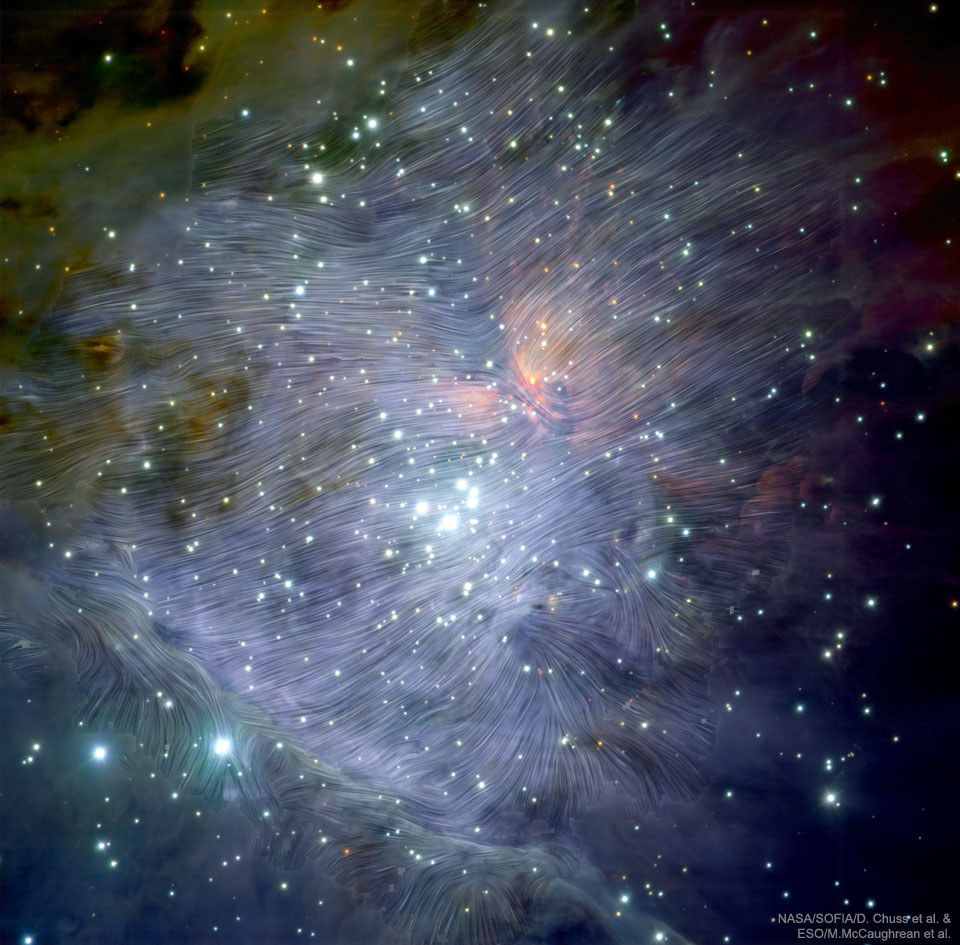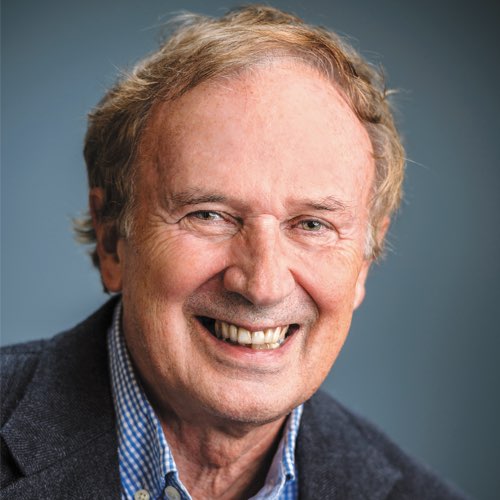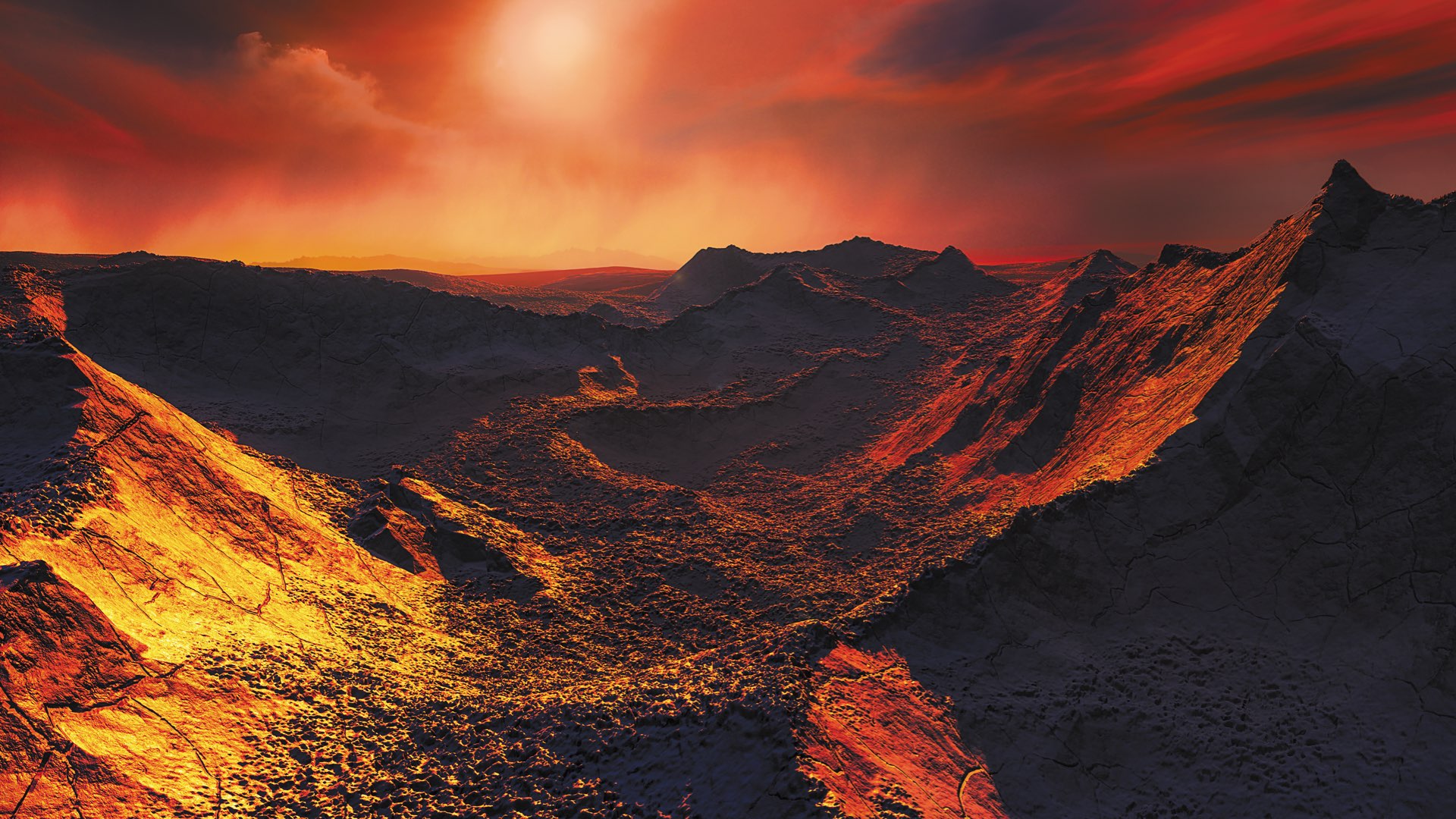Can life find a way on a cold planet? The answer — that nearby super-earth Barnard b has the potential to sustain life — attracted international attention for Villanova astrophysicists, earning them media coverage in more than 265 outlets.
Edward Guinan, PhD, ’64 CLAS and Scott Engle, PhD, ’03 CLAS had no idea it would garner so much fanfare when they put together a last-minute poster on the topic with Ignasi Ribas, PhD, director of the Institute of Space Studies of Catalonia, Spain, for the American Astronomy Society this past January.
“Barnard b receives only 2 percent light relative to the Earth and thus is cold. However, all hope for life on Barnard b may not be lost,” the authors wrote. “As a super-earth, Barnard b could have a large hot iron core that could result in enhanced prolonged geothermal activity.”
The collaborators announced their discovery of the super-earth orbiting Barnard’s Star in the journal Nature in 2018. Just six light years away, Barnard b orbits the closest single star to our own sun and is more than three times the size of Earth. However, its estimated surface temperature is minus 238 degrees Fahrenheit, which likely means ice covers its rocky terrain.
ESO/M. Kornmesser
“This looked like a cold, dead planet, but if it has geothermal heating like Earth, there’s a chance that this planet could potentially harbor primitive life,” Dr. Guinan says. Geothermal heating is heat generated by the Earth itself. Estimated to be about 10,800 degrees Fahrenheit, the temperature of Earth’s inner core heats almost 400 subglacial lakes in Antarctica. In an Astrobiology course Dr. Guinan teaches on extreme life, he and his students explore life in Lake Vostok, the largest of these lakes.
“If I didn’t teach that course, I don’t know that I would have thought about the possibility of geothermal heating on Barnard b,” Dr. Guinan explains. “Even though it’s cold and has a frozen surface, similar geothermal activity could create lakes underneath the ice, where you could have subterranean life like we do.”
Dr. Guinan is currently working with Dr. Engle and Dr. Ribas on a follow-up paper that will be published later this year, with help from Villanova Undergraduate Research Fellows Zachary Ferguson ’20 CLAS and Kasey Purcell ’20 CLAS.
Developing A New Camera For NASA

High-resolution Airborne Wideband Camera-plus (HAWC+)
NASA/AFRC
Villanovans are reaching for the stars — and taking pictures of them. Physics professor David Chuss, PhD, ’95 CLAS, who previously worked as an astrophysicist with the NASA Goddard Space Flight Center for 11 years, and undergraduate collaborator Joseph Michail ’19 CLAS helped develop a camera for NASA’s Stratospheric Observatory for Infrared Astronomy (SOFIA).
They worked with NASA’s Jet Propulsion Laboratory team to develop the High-resolution Airborne Wideband Camera-plus (HAWC+), which unveils the magnetic fields that can affect star formation. The Villanova team, which also includes Javad Siah, PhD, assistant professor of Physics, and postdoctoral researcher Jordan Guerra, PhD, has led the analysis of some of the first results from HAWC+.
First Glimpse Of Black Hole

Event Horizon Telescope Collaboration
Imagine a telescope the size of Earth—that’s essentially what it took to piece together the very first picture of a black hole. “This is an extraordinary scientific feat accomplished by a team of more than 200 researchers,” says the Event Horizon Telescope project director Sheperd S. Doeleman of the Harvard-Smithsonian Center for Astrophysics.
Two of those researchers, Villanova Physics assistant professor Joey Neilsen, PhD, and Physics major Jadyn Anczarski ’20 CLAS, contributed their analysis of X-ray observations on behalf of the EHT’s Multiwavelength Working Group. “X-ray observations help connect the dots between high-energy emission and the behavior of matter near the event horizon,” Dr. Neilsen says. “It’s incredible to be a part of this project.”
“
... This planet could potentially harbor primitive life.”
Edward Guinan, PhD

